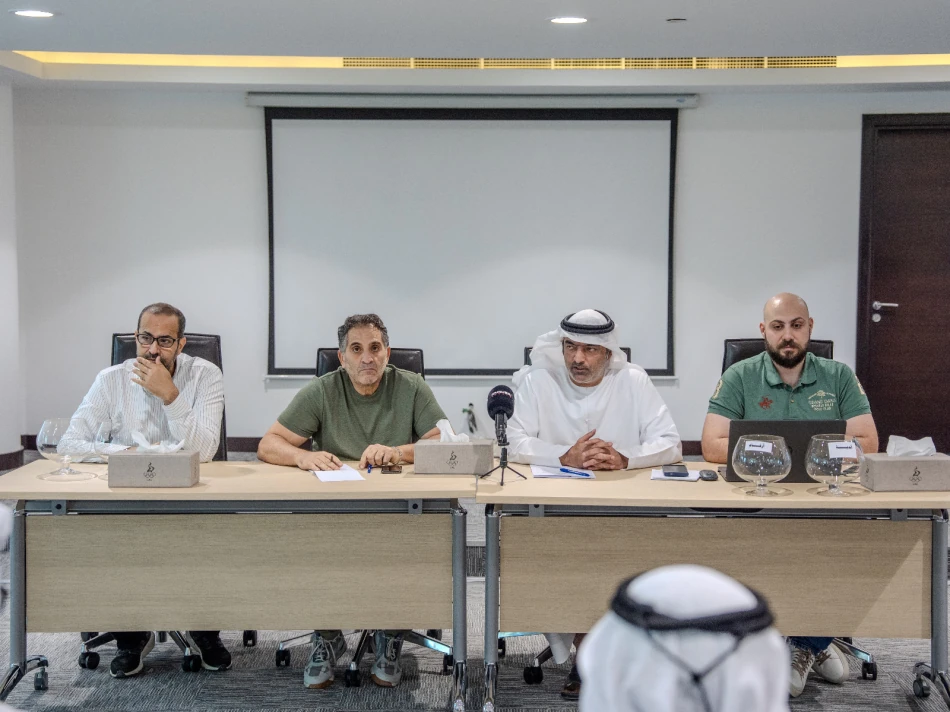
Upcoming Handball Champions League: Excitement Builds as 'Kass Al Watan' Kicks Off on September 2nd
UAE Handball Federation Kicks Off 2025-2026 Season with Strategic Tournament Restructuring
The UAE Handball Federation has drawn the fixtures for its 2025-2026 season across multiple age categories, signaling a renewed push to strengthen the sport's infrastructure in the Emirates. The draw, conducted at the federation's Dubai headquarters, sets up an ambitious tournament calendar that begins with the delayed "Nation's Cup" in September, followed by a comprehensive league system designed to boost competitive standards.
Nation's Cup Returns After Year-Long Delay
The federation will launch the men's season with the "Nation's Cup" on September 2nd, a tournament postponed from the 2024-2025 season. This knockout competition features six teams, with defending powerhouses Shabab Al Ahli and Sharjah receiving direct qualification to the semi-finals—a format that rewards established performance while creating opportunities for emerging clubs.
The tournament structure reflects a pragmatic approach to competition management. Dibba Al Hisn faces Al Wasl in the opening round, with the winner advancing to meet Shabab Al Ahli in the semi-finals. Meanwhile, Al Nasr takes on Maliha, with their victor facing Sharjah. The final is scheduled for September 9th, creating a tight seven-day tournament window that should maintain audience engagement.
Regional Competition Pathway
The Nation's Cup winner earns qualification for the UAE Super Cup, which serves as a gateway to the UAE-Bahrain Super Cup. This regional competition structure mirrors successful models in European football, where domestic success translates into broader international exposure. For UAE handball, this creates a clear competitive hierarchy that incentivizes club investment and player development.
Men's League Expansion Signals Growth Ambitions
The men's league launches on September 20th with seven participating clubs across three rounds of competition. The opening fixtures—Dibba Al Hisn vs Al Wasl, Shabab Al Ahli vs Al Dhaid, and Sharjah vs Al Nasr—showcase the federation's effort to maintain competitive balance while accommodating traditional rivalries.
This seven-team format represents a strategic middle ground between inclusivity and quality. Unlike basketball or football leagues that often struggle with uneven competition due to large participant numbers, handball's smaller scale allows for more meaningful matches and better resource allocation across clubs.
Youth Development Takes Center Stage
The federation's comprehensive approach extends across five age categories: men, youth, juniors, cubs, and children. This pipeline structure reflects lessons learned from successful handball nations like Denmark and France, where systematic youth development has produced consistent international success.
The timing of these draws in mid-summer allows clubs adequate preparation time while avoiding conflicts with the region's peak heat period. September launches have become standard across Gulf sports, balancing weather considerations with international calendar coordination.
Market Implications and Regional Context
The UAE's handball development occurs within a broader regional sports investment boom. While neighboring Saudi Arabia captures headlines with football and golf investments, the Emirates' focus on Olympic sports like handball demonstrates a more diversified approach to sports infrastructure.
This strategy positions UAE handball to benefit from increased government sports funding while avoiding the overcrowded football market. The federation's systematic approach—postponed tournaments rescheduled rather than cancelled, clear pathways from youth to senior levels—suggests institutional maturity that should attract both sponsors and international partnerships.
The 2025-2026 season represents more than fixture scheduling; it demonstrates the UAE's commitment to building sustainable sporting ecosystems beyond headline-grabbing mega-events. Success in these domestic competitions could establish handball as a model for other Olympic sports development in the region.
 Sara Khaled
Sara Khaled







